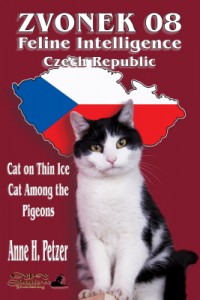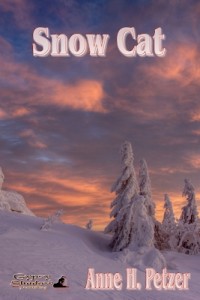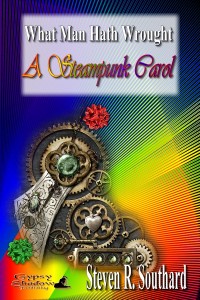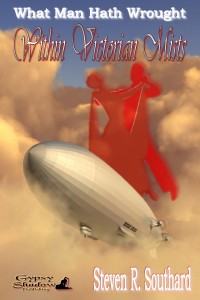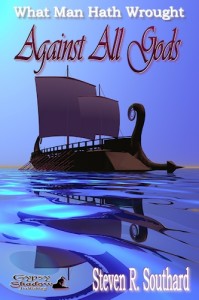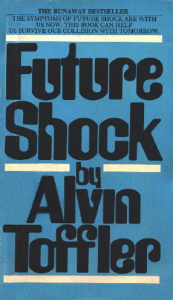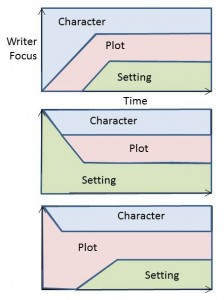
 In the original Star Trek TV series, there’s an episode where Captain Kirk invents a card game called Fizzbin in which he makes up the rules as he goes along. The comic strip Calvin and Hobbes featured a game called Calvinball which may never be played by the same rules twice.
In the original Star Trek TV series, there’s an episode where Captain Kirk invents a card game called Fizzbin in which he makes up the rules as he goes along. The comic strip Calvin and Hobbes featured a game called Calvinball which may never be played by the same rules twice.
If you’re a writer of fiction, you might consider yourself to be playing such a game, too. According to W. Somerset Maugham, “There are three rules for writing the novel. Unfortunately, no one knows what they are.” With apologies to the famous novelist, I’d say the game has too many rules to memorize and they change with time, according to the tastes of readers. Only by playing the game well can you can make money selling books.
You might try to emulate great writers of the past and imitate their writing styles, in an effort to achieve success. Bad idea. The rules were different in their time. Let’s cover some of those former rules.
1. Take all the time you need to create a vivid description, to ‘paint’ with words. Writers of the 19th Century and earlier used extensive portrayals to convey the appearance of a scene or character, multi-paragraph descriptions abounding in adjectives. That worked well in an era without movies or TV, but readers won’t wade through such long-winded descriptions today.
2. Adverbs exist for a reason; use them. Authors once used adverbs with abandon. Adverbs modify adjectives or verbs and often end in ‘ly’ like ‘crazily.’ These days it’s considered lazy to use too many adverbs, a sign you didn’t take time to select a powerful enough verb.
3. Demonstrate your skill as an author in your narrative paragraphs; dialogue only interferes with that. At one time, fiction was mostly narration, with occasional dialogue. We’re now in an age of character-driven stories, and readers want characters to talk more. No long, boring narrative paragraphs, and less narration overall.
4. Incorporate a rather dull character who needs everything explained to him (even things he already knows); that’s a clever way to explain things to the reader. There was an era when authors could use this technique even if it strained the conversation a bit. These days, that’s no longer tolerated and there’s even a term for it–As You Know, Bob or AYKB. AYKB’s are tempting, an easy trap to fall into even if you make every effort to avoid them.
5. Bring the narrator in as an entity the reader can trust, as one who helps foreshadow future events. In a bygone past, writers could have the narrator speak directly to the reader. And now, Gentle Reader, let us discover what Annabel must be thinking about this latest development. That voice could be used to foreshadow future events in an ominous tone. Little did Frank know, but his secure life would soon be altered forever. Understand, it’s still okay to use foreshadowing, but do it with subtlety, and not with the narrator speaking to the reader. Today that’s referred to as narrative intrusion.
6. Find clever new ways to express your ideas. As centuries of writers did this, many of the word combinations they used were so good the first time, they got used again, and re-used many times over. And became clichés. Now you don’t get to use those clichés, unless you add some twist on them. Go think of your own clever word combo that might become a future cliché. This rule didn’t change, but sorry, you can’t use the same tired clichés.
7. Ease into your story by introducing the reader to the setting, time period, and major characters before any action occurs. Readers in those times had nothing to compete with books for entertainment, and had the time to curl up near the fire and read a cozy story by its light. Times are different. You must grab your reader by the throat with a first sentence or paragraph that demands attention. It’s called a hook, and stories without a good one stay un-bought.
So, are you up for a game like Fizzbin or Calvinball? May the best writer win! Unfortunately, the game’s rules aren’t known by you or—
Poseidon’s Scribe

 I’m the one on the right, by the way. Why, yes, that is an electric pistol I’m holding; very observant of you to notice. Not visible in this photo is the Captain Nemo motto “Mobilis in Mobile” on my chest. My Nemo costume is based on the original illustrations, unlike the movie versions where Nemo appears either as a Navy Captain or an Indian Prince. Jules Verne’s Nemo had abandoned connections with the land. He was no military man, nor did he consider himself Indian any longer. He was part engineer and part pirate, and his clothing reflected that.
I’m the one on the right, by the way. Why, yes, that is an electric pistol I’m holding; very observant of you to notice. Not visible in this photo is the Captain Nemo motto “Mobilis in Mobile” on my chest. My Nemo costume is based on the original illustrations, unlike the movie versions where Nemo appears either as a Navy Captain or an Indian Prince. Jules Verne’s Nemo had abandoned connections with the land. He was no military man, nor did he consider himself Indian any longer. He was part engineer and part pirate, and his clothing reflected that. Here’s my electric pistol. Very steampunk! The golden, jagged sights on top are reminiscent of the Nautilus submarine from the Disney film of 1954. True, Nemo didn’t go around carrying a pistol. The electric rifles mentioned in Twenty Thousand Leagues Under the Sea were only for underwater use, and the original illustrations show them to be similar in appearance to standard rifles. I just took a little creative license.
Here’s my electric pistol. Very steampunk! The golden, jagged sights on top are reminiscent of the Nautilus submarine from the Disney film of 1954. True, Nemo didn’t go around carrying a pistol. The electric rifles mentioned in Twenty Thousand Leagues Under the Sea were only for underwater use, and the original illustrations show them to be similar in appearance to standard rifles. I just took a little creative license. And there’s the motto. The Latin translates as “moving in a moving thing” or, more metaphorically, “free in a free world.” Yes, you can find versions of 20,000 Leagues Under the Sea where it’s rendered as “Mobilis in Mobili” where that last word ends in ‘i,’ but I’m told that’s plural, and singular was most likely intended.
And there’s the motto. The Latin translates as “moving in a moving thing” or, more metaphorically, “free in a free world.” Yes, you can find versions of 20,000 Leagues Under the Sea where it’s rendered as “Mobilis in Mobili” where that last word ends in ‘i,’ but I’m told that’s plural, and singular was most likely intended.
